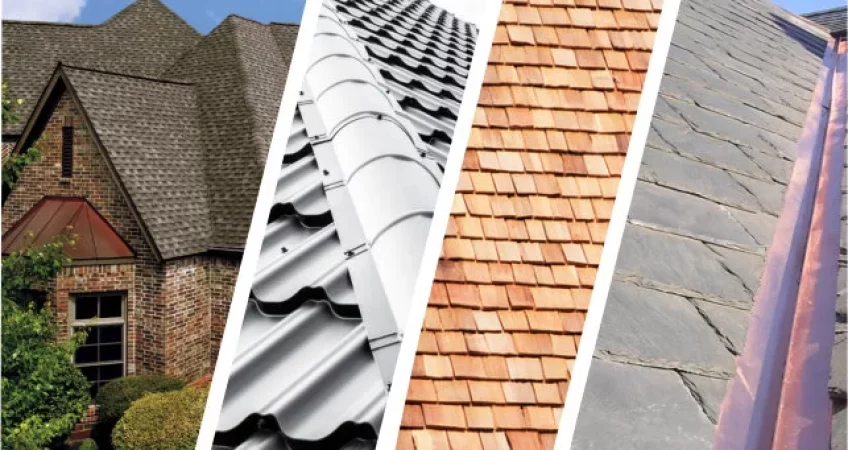Selecting the suitable roofing material for your home is a significant decision that affects your property’s aesthetics and functionality. Choosing the Right Roofing Material: Factors to Consider. With numerous options available, evaluating various factors is crucial to ensure you make the best choice. In this article, we’ll explore the key considerations that will guide you in choosing the perfect roofing material for your needs.
1. Climate and Weather Conditions
Your region’s climate and weather conditions are vital in determining the ideal roofing material. Some materials perform better in areas with heavy rainfall, while others are designed to withstand extreme heat or cold. Consider how well the material can resist moisture, temperature fluctuations, and other environmental factors in your area.
2. Longevity and Durability
The lifespan of your roofing material is an essential factor to consider. Different materials have varying levels of durability. While asphalt shingles are commonly used and offer decent longevity, options like metal or slate can provide exceptional durability that can last several decades with proper maintenance.
3. Aesthetic Appeal
The roofing material you choose contributes significantly to your home’s curb appeal. Think about the overall architectural style of your home and the visual impact you want to achieve. Some materials, like wood shingles or tile, offer a timeless and charming appearance. At the same time, metal roofing can provide a modern and sleek look.
4. Cost and Budget
Your budget is a significant factor when selecting a roofing material. Different materials come with varying price points, including installation costs. Balancing your desired aesthetic with your budget constraints is essential to find the best fit for your project.
5. Maintenance Requirements
Consider the amount of maintenance each roofing material requires. Some materials, like asphalt shingles, are relatively low-maintenance. In contrast, others, such as wood shingles, may need regular treatments to prevent decay—factor in the long-term maintenance costs and efforts when deciding.
6. Energy Efficiency
Incorporating energy-efficient roofing materials can positively impact your home’s energy consumption. Light-colored materials and reflective coatings can help reduce heat absorption, lowering cooling costs in hot climates. Look for roofing materials with high Energy Star ratings for optimal efficiency.
Conclusion
Choosing the suitable roofing material involves carefully evaluating various factors, from climate conditions to budget constraints. By considering factors like durability, aesthetics, maintenance requirements, and energy efficiency, you can make an informed decision that enhances your home’s appearance and provides reliable protection for years to come.
Choosing the Right Roofing Material: Factors to Consider
Ready to choose the perfect roofing material for your home? Our experts are here to help. Book a consultation today to explore the best roofing options that align with your needs, style, and budget.

